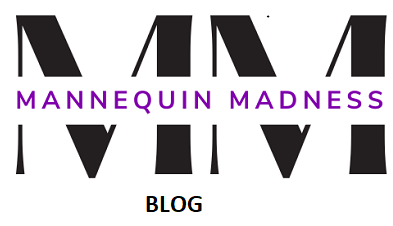We often talk about mannequins being featured in art of various kinds but we rarely mention the actual artists who use mannequins as their “muses.” Two such artists are Peter Keil and Joan Semmel, we are profiling in this two part series.
Peter Keil, Neo-Expressionist Artist
Peter Robert Keil was born in 1942 in Züllichau / Pommern (now Poland). In the early years of WWII, he made his way to West Berlin where war chaos ruled. He grew up on the streets, seeking refuge in the trees of a nearby park.
The young Keil discovered the art book section of the local library; he was attracted to the works of the Expressionists, especially Picasso. The colors and dynamic qualities of the paintings were comforting in the backdrop of war. Initially, Peter studied and copied the style of the art master Picasso.

At 15 he met the painter Otto Nagel, who became his first teacher and mentor. Keil accompanied Nagel on his tours of Berlin’s back streets and Keil began to see his neighborhood through the eyes of an artist. Nagel clearly influenced his motifs and his color palette.
Keil refined his technique at Berlin’s “Akademie fur Bildende Kiinste.” There, he met artists Baselitz, Fetting, Lupertz and Schonebeck and made friends with Salome, Schmettau and other important artists who influenced his art. Keil became the treasure of art circles. He was given the nickname, ‘Wildman of Berlin,” for his unruly locks of hair, passionate art, and lifestyle. At some point, he started using mannequins as his canvas for many of his creations.


The building of the Berlin Wall interrupted his contact with certain artists but Keil formed a close friendship with the painter Juan Miro, who often invited him to his studio in Palma. The intense sunlight as well as the vivid colors of the Mediterranean region were important sources of inspiration for both Miro and Keil. He met and conversed with artists Salvador Dali, Andy Warhol, and Picasso. His art gradually evolved to a freer, neo-expressionist style.
From Spain, Keil moved to a small studio in Paris. By day he studied the Old Masters in the museums, at night he painted portraits in bars to earn his living. He mingled with colorful characters; his models became the outcasts of the Parisian streets.
Keil moved to London for a while but he found his way back to Berlin to paint on a full-time basis. Keil now lives there with his family for several months of the year; for the rest of the year he resides in Bavaria or south Florida.
A product of the post-war years of resistance and protest, Keil’s paintings reflect Berlin’s enigmatic attitude toward life and politics in the late sixties and seventies; likewise he was an active participant of the hippie movement, all of it influencing his art. Using rich colors, Keil is seen as a master craftsman of neo-expressionism, highly desirable to collectors and museums.
